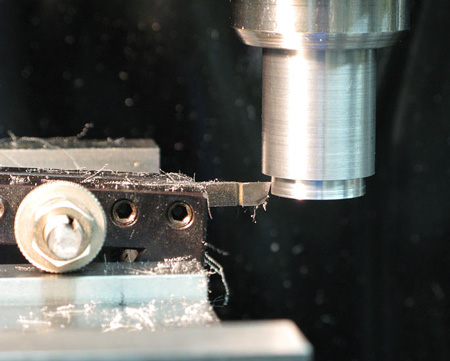My slitting saws always seem to have a pulsing sound when the cut...caused from radial run out. Today I put and instrument on it ...and I see a TIR of about .002" on a 4" diameter. I've used this saw for years...and it works great...but sounds like it only cuts on one side of the circumference.
What is the run-out on your slitting saws??
-Rob
What is the run-out on your slitting saws??
-Rob



